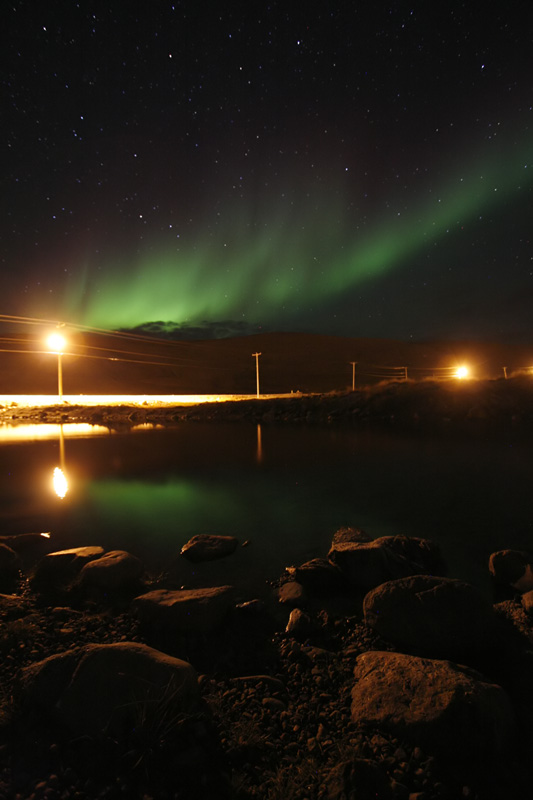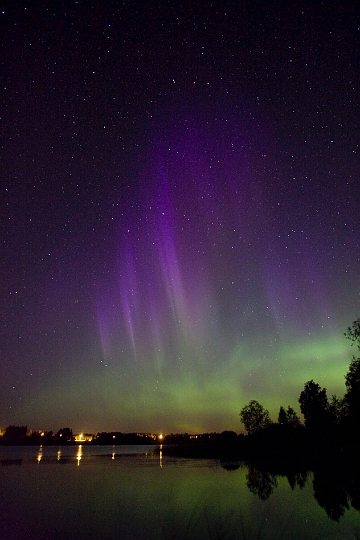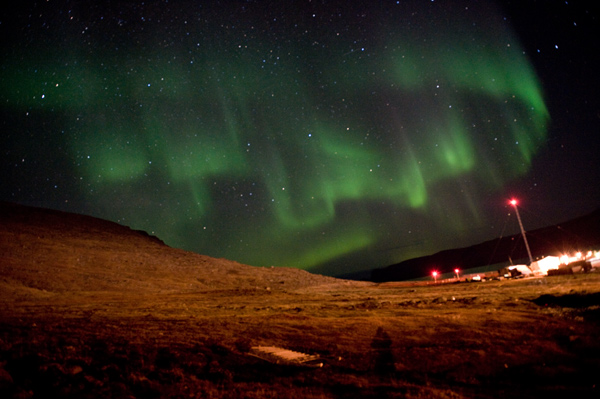The Space shuttle Endeavour lands in California after a 16-day mission to the ISS
By John Antczak and AP Aerospace Writer Marcia Dunn, November 30, 2008
 » Endeavour / 2 / 3 / 4 » Video
» Endeavour / 2 / 3 / 4 » Video- After undocking from the ISS the space shuttle Endeavour was flying 51 orbits of the planet entering than at an altitude of 42 miles into the Earth atmosphere. Around one hour and ten minutes later, flying at a speed of 15700 miles p.h., 15 times the speed of sound, the shuttle landed in California, as one could watch live on NASA TV.
 » ISS crew watched landing from space
» ISS crew watched landing from space » high.r / 2 / 3 / 4 / 5
» high.r / 2 / 3 / 4 / 5- The space shuttle Endeavour comes in for a landing at Edwards Air Force Base, Sunday, Nov. 30, 2008 in California. Endeavour's landing ends a 16-day mission during which the shuttle flew to the international space station delivering a new bathroom, kitchen, exercise machine, sleeping quarters and recycling system designed to convert urine and sweat into drinking water. Endeavour traveled 6,615,109 miles during its journey.
Edwards Air Force Base, California. (AP) - Space shuttle Endeavour and its seven astronauts safely returned to Earth on Sunday, taking a detour to sunny California after storms hit the main landing strip in Florida. The mission wasn't without its problems. Astronaut Heidemarie Stefanyshyn-Piper let go of a $100,000 tool bag during the first spacewalk, muttering "Oh, great" as it floated away. And Endeavour's astronauts also had to put in extra effort to get the urine processor working.
The shuttle crew also conducted four spacewalks to clear metal shavings from a solar wing rotary joint at the space station. The joint had been jammed for more than a year and hampered energy production at the orbiting outpost. Initial tests indicated the repairs on the joint were successful. The space station additions — and a few more scheduled to go up on the next shuttle flight in February — should enable NASA to double the size of the space station crew by June. On Sunday, NASA ordered the detour to California after dangerously high wind and a stormy sky prevented a Florida landing. "Welcome back. That was a great way to finish a fantastic flight," Mission Control radioed. "And we're happy to be here in California," shuttle commander Christopher Ferguson replied. Congratulations also came down from the space station. "Wow," said skipper Mike Fincke, who watched the landing broadcast live.
Returning home from a six-month mission was former space station resident Gregory Chamitoff, who had rocketed away from the planet at the end of May. The space shuttle's journey, short by comparison, spanned 6.6 million miles and 250 orbits of Earth. NASA always prefers to land the space shuttles at their home base in Florida. It takes about a week and costs $1.8 million to transport a shuttle from California to Florida, atop a modified jumbo jet. The astronauts also had been rooting for a Florida touchdown; that's where their families were waiting. As Endeavour soared over Houston, home to Mission Control, Ferguson could see all the bad weather in Florida. "I think you made a good call," he radioed. It was the first space shuttle landing at Edwards in more than a year.
When Endeavour hurtled over metropolitan Los Angeles, firefighters responded to a report of an explosion that turned out to have been the spacecraft's signature sonic booms. Ferguson landed on a temporary runway that's shorter and more narrow than the Kennedy landing strip. Edwards' main runway — which parallels the temporary one — just underwent maintenance and upgrades, and has yet to be equipped with all the necessary navigation equipment. NASA officials said both Ferguson and his co-pilot, Eric Boe, had practiced on the temporary runway in training aircraft. Flight surgeons were standing by at Edwards. Chamitoff, in particular, was expected to need assistance at touchdown; he had not experienced gravity for six months. Endeavour's crew members were expected to be reunited with their families on Monday in Houston. Early Sunday morning, a Russian supply ship arrived at the space station with Christmas presents, food, clothes and other items. (more)
• NASA: Endeavour Lands in California • Photos: Endeavour back on Earth • www.space.gs
Technologyreview: Obama's NASA Dilemma - The fate of the U.S. space program hangs in the balance.
___
On the Net:
 Photos: Aug. '07
Photos: Aug. '07NASA News Archive: Nasawatch.com/shuttle - Iss
NASA News Releases: Montebubbles.net/nasa_news
forum.nasaspaceflight.com • www.nbbd.com/events/nasa


 •
•  •
•  •
•  •
•  •
•  •
• 

 » Video:
» Video: 



 • Photos:
• Photos: 
 Aurora from Nov. 30, 2008
Aurora from Nov. 30, 2008  •
•  •
•  •
•  •
•  •
•  • BBC:
• BBC:  •
•  • Photos:
• Photos:  •
• 